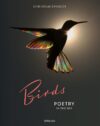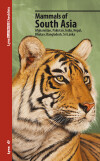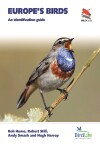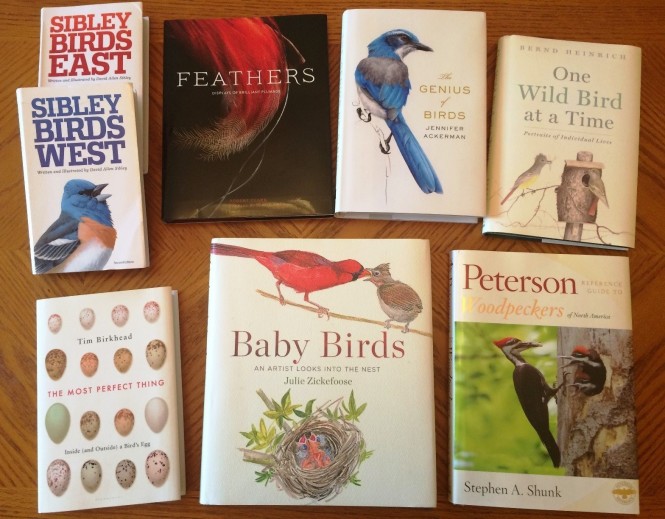
April 2016, along with the last bit of March, has been probably the best month for bird books that I can recall. There’s a set of highly anticipated field guides, a family guide, and books with gorgeous illustrations, all from some of the best writers around. Just the ones that I’ve received so far are:
That’s enough reading to keep one occupied for quite some time, but that’s not all! There are even more coming…
I need help prioritizing which to review first, so if there’s one you’re particularly interested in please let me know in the comments.
I’m sorry for the lack of reviews lately. This summer has been very busy with work and family stuff. So I wanted to mention some recent books that I haven’t reviewed yet. If you’re particularly interested in one or more of these, please let me know and I’ll prioritize it.
-
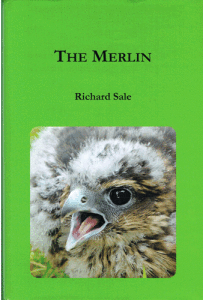 The Merlin
The Merlin
by Richard Sale
I love falcons, but I must admit that I have a tendency to overlook Merlins. Not that I ignore them in the field, but I don’t think of them on the same level as kestrels or, especially, Peregrines or Gyrfalcons. This book is changing that. Its purpose is to sum up the current ornithological research on the species, so is intended for a more technical, professional audience. But it’s still very readable and enjoyable for birders. I’d recommend it to anyone interested in this bird (or who ought to be more than they are).
-
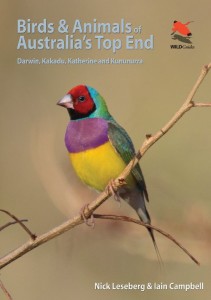 Birds and Animals of Australia’s Top End: Darwin, Kakadu, Katherine, and Kununurra
Birds and Animals of Australia’s Top End: Darwin, Kakadu, Katherine, and Kununurra
by Nick Leseberg and Iain Campbell
This Princeton/WildGuide field guide follows the same plan as the others in the series (to various regions in Africa, which I reviewed on Nature Travel Network). And it will be just as useful to anyone traveling in the region. Birders will appreciate that it also includes mammals, reptiles, and amphibians likely to be encountered, especially since Australia has some really cool creatures.
-
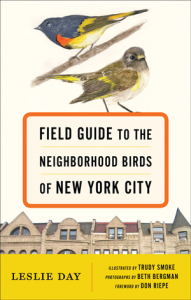 Field Guide to the Neighborhood Birds of New York City
Field Guide to the Neighborhood Birds of New York City
by Leslie Day
This is not a book for visiting birders – you’ll find minimal information on birding hotspots or where to find certain species. Rather, this is for residents of New York. It should facilitate the identification of most birds seen within the city. But even more importantly, I hope that it will be an eye-opener to residents, many of whom I’m sure have no idea as to the diversity of birds that they can see in the neighborhoods around them.
-
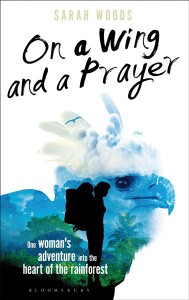 On a Wing and a Prayer: One Woman’s Adventure into the Heart of the Rainforest
On a Wing and a Prayer: One Woman’s Adventure into the Heart of the Rainforest
by Sarah Woods
Framed around the author’s goal of seeing a Harpy Eagle in the wild, this book takes you to many places in Central and South America. Despite the goal, and the mention of many other birds, this isn’t a “birding book”. The places, and the people inhabiting them, are much more prominent. But that’s ok, this book is still plenty interesting! If you have any interest at all in this region – how can you be a birder and not? – this is a worthwhile read.
I wish I could review every bird book that I get. But, unfortunately, that doesn’t seem like it will happen. Here are some recent books that I haven’t gotten to yet. I may eventually post a full review for some of these, but I wanted to go ahead and give some brief thoughts on them. And if there’s one or more of these that you’d like to know more about, please let me know by leaving a comment.
-
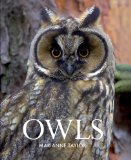 Owls
Owls
by Marianne Taylor
The first half of this book covers owls in general – their biology, behavior, conservation, etc. The second part consists of species accounts for all the owls of the U.S., Canada, and Eurasia. This type of book has been done several times before (see Owls of North America for example). But if you don’t already have anything similar, this would be a good general owl book to get due to the especially exceptional photography.
-
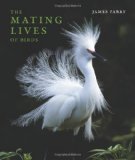 The Mating Lives of Birds
The Mating Lives of Birds
by James Parry
This book covers everything from courtship through fledging young. That includes an awful lot of a bird’s life, including singing, courtship displays, building nests, eggs, and nestlings. Filled with some very nice photos, this makes a good introduction to these subjects.
-
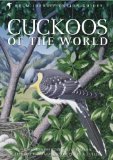 Cuckoos of the World
Cuckoos of the World
by Johannes Erritzøe, Clive F. Mann, Frederik Brammer, and Richard A. Fuller
I can only hope that the format used here (and in Cotingas and Manakins before it) becomes the norm for family identification guides. The basic plan, with plates in the front separated from the species accounts is pretty common. But the accounts here also include a decent selection of photographs. When you factor in the very attractive artwork, nice maps, and overall eye-catching design it all adds up to a very nice family guide. Honestly, living in a relatively cuckoo-deprived area, I’ve never given these birds much thought. But just looking through this guide has convinced me I need to change that.
-
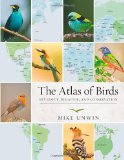 The Atlas of Birds: Diversity, Behavior, and Conservation
The Atlas of Birds: Diversity, Behavior, and Conservation
by Mike Unwin
Given the title, I’m sure you won’t be surprised that this book contains lots of maps! They’re used to give an overview of where birds live, the different orders of birds, how birds live, birds and people, threats, and conservation. Topics are covered very briefly, usually in a two page spread. But it’s got some fantastic illustrations – both the maps and many bird photographs. I think this makes an excellent introduction to many topics concerning birds.
-
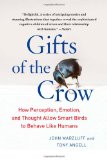 Gifts of the Crow: How Perception, Emotion, and Thought Allow Smart Birds to Behave Like Humans
Gifts of the Crow: How Perception, Emotion, and Thought Allow Smart Birds to Behave Like Humans
by John Marzluff and Tony Angell
The authors take a close look at crows and jays, widely acknowledged as the most intelligent birds. They include some amazing stories and anecdotes, but go beyond that to explaining how and why these birds engage in the behavior that they do. The scientific explanations can get a little on the heavy side (this is neurobiology, after all!), but overall everything is explained very clearly. I’d recommend this book to birders interested in learning more about the amazing things birds are capable of doing.
-
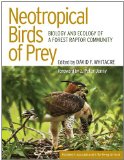 Neotropical Birds of Prey: Biology and Ecology of a Forest Raptor Community
Neotropical Birds of Prey: Biology and Ecology of a Forest Raptor Community
by David F. Whitacre
This is not an identification guide, but rather is intended to gather together a summary of all that is known about the lives of the neotropical raptors of the Mayan forest community. As such, you can think of these accounts as similar to those of the Birds of North America project. There are some nice color photographs, but they aren’t the main draw. This book will be of much use to ornithologists studying these birds, but not nearly as much to birders. So I wouldn’t recommend a purchase unless you have a great affinity for the raptors of this region.
Several good bird books have been published lately, of which here are a few. I’m planning to do full reviews for all of these, but thought I’d go ahead and present some brief thoughts (especially since I don’t write nearly as fast as I wish I did).
-
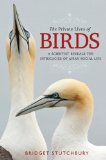 The Private Lives of Birds: A Scientist Reveals the Intricacies of Avian Social Life
The Private Lives of Birds: A Scientist Reveals the Intricacies of Avian Social Life
Bridget Stutchbury
This book provides birders a glimpse into the ornithologist’s world. The author investigates the habits of birds in regard to mating, parenting, territoriality, migration, and more. But she does more than just present the facts; she explains the studies that were done to discover those facts. This is a great introduction to the lives of birds. Even experienced birders will learn something new.
-
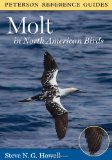 Peterson Reference Guide to Molt in North American Birds
Peterson Reference Guide to Molt in North American Birds
Steve N.G. Howell
Molt is an intimidating topic, but one that is important for birders to understand. Howell first gives an extensive introduction to molt, and then describes the molting patterns for each family of North American birds. Honestly, I was surprised to find that all of the family accounts were worth reading; you never know what fascinating tidbits you may uncover, like the possibility that Bullock’s X Baltimore Oriole hybrids are selected against because they could be molting twice in the fall instead of just once. Personally, I understand molt much better now, and can see myself referring back to this guide often. Highly recommended to intermediate-to-advanced birders.
-
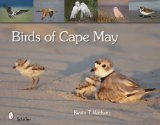 Birds of Cape May
Birds of Cape May
Kevin T. Karlson
Essentially a large-format photo album, this book showcases the birds of Cape May, New Jersey season by season. Karlson, an excellent photographer, provides most of the photos along with short captions. Recommended to those who’d like a good souvenir or reminder of a trip to this birding hotspot, or to any fan of bird photography in general.
-
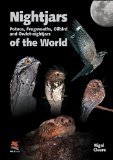 Nightjars, Potoos, Frogmouths, Oilbird, and Owlet-nightjars of the World
Nightjars, Potoos, Frogmouths, Oilbird, and Owlet-nightjars of the World
Nigel Cleere
This large, lavish book is a photographic guide to an intriguing group of birds. Just the fact that this book includes photos of every known member of this nocturnal and secretive group is amazing enough (though some, by necessity, are of museum specimens), but they’re also of very high quality and huge! Most birds are shown perched or roosting, there are few in-flight shots, unfortunately. A range map and terse text covering the species’ identification and natural history round out each account. This certainly won’t appeal to everyone, but caprimulgid fans should love it.
-
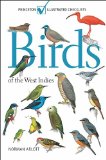 Birds of the West Indies (Princeton Illustrated Checklists)
Birds of the West Indies (Princeton Illustrated Checklists)
Norman Arlott
The guides in this “illustrated checklists” series are more than merely bound checklists with illustrations, yet less than a full field-guide. Still, a good bit of information is included in this portable book. With painted plates on the right-hand pages and text on the left, the design is certainly typical for field guides. It does include range maps, but unfortunately, they are all gathered together in the back. I haven’t yet extensively compared this to the identically named field guide by Herbert Raffaele . From my cursory examinations, I can’t unilaterally recommend one over the other right now.
. From my cursory examinations, I can’t unilaterally recommend one over the other right now.
-
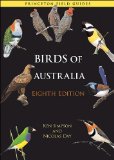 Birds of Australia: Eighth Edition
Birds of Australia: Eighth Edition
Ken Simpson and Nicolas Day
I don’t have any other Australian field guides to compare this against (except the prior edition of this guide!), nor have I ever been anywhere near Down Under. So I’m no authority here, but this is one good-looking field guide! Maybe it’s all the exotic-looking birds, but the plates (again on the right-hand page) are gorgeous. Text accounts, small black-and-white drawings, and very informative range maps accompany the paintings. For a field guide covering an avifauna about the same size as the US and Canada’s, this is a fairly compact book, making it possible to carry in the field. Take this with a grain of salt, given my lack of experience with this region, but if you’re looking for an Australian field guide, this is a legitimate choice.
I had intended to regularly post about what I’m reading and reviewing, but I just noticed that I haven’t done so since last July. Where has the time gone? I guess that’s what happens when you have a newborn around. Convenient excuse? Yes. But the cutest, most adorable excuse I can imagine 🙂
Here’s what I’m currently reading and/or reviewing:
-
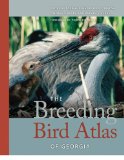 The Breeding Bird Atlas of Georgia
The Breeding Bird Atlas of Georgia
Todd M. Schneider, Giff Beaton, Timothy S. Keyes, and Nathan A. Klaus
Finally, my home state has its own Breeding Bird Atlas. It was worth the wait. Anyone who birds extensively in Georgia should get a copy.
-
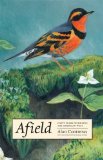 Afield: Forty Years of Birding the American West
Afield: Forty Years of Birding the American West
Alan Contreras
Part memoir, but mostly just good writing about birding.
-
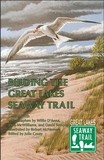 Birding the Great Lakes Seaway Trail
Birding the Great Lakes Seaway Trail
A guide to birding spots found along the Great Lakes Seaway Trail, which runs along the shorelines of the Great Lakes in Pennsylvania and New York.
-
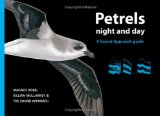 Petrels Night and Day
Petrels Night and Day
Magnus Robb, Killian Mullarney, and The Sound Approach
A guide to the tubenoses of the Northeast Atlantic. All the reviews that I’ve read have been glowing in their praise for this book, and I can see why. It has a little of everything – cutting edge investigation of species limits, travelogue, identification plates, and, naturally, sounds.
I hate that I haven’t done many reviews lately, but between work and other things it’s been pretty busy lately. Of course, since one of those “other things” is our first child that will be arriving in September, I’m not sure when I’ll get any more time!
But to help fill in the gaps, I’m going to start regularly posting about the book(s) that I’m currently reading. These will be what I will be reviewing next, so it’s kind of like a preview. Here’s what I’m currently working on:
-
 Birdsong by the Seasons: A Year of Listening to Birds
Birdsong by the Seasons: A Year of Listening to Birds
Donald Kroodsma
The author’s previous book, The Singing Life of Birds , is probably the best birdsong for birders book out there. This new one is more of a supplement – instead of teaching about the science of birdsong, it extols the wonder of it. If you enjoy listening to birds, then you will love this book.
, is probably the best birdsong for birders book out there. This new one is more of a supplement – instead of teaching about the science of birdsong, it extols the wonder of it. If you enjoy listening to birds, then you will love this book.
-
 The Prairie Keepers: Secrets of the Zumwalt
The Prairie Keepers: Secrets of the Zumwalt
Marcy Houle
I loved the author’s prior work, Wings for My Flight: The Peregrine Falcons of Chimney Rock, so I was looking forward to reading this as well. So far, it is not disappointing me. I’m blazing through this account of the author’s time spent uncovering the secrets of one of the last (relatively) unspoiled prairies in North America.
-
 Grass, Sky, Song: Promise and Peril in the World of Grassland Birds
Grass, Sky, Song: Promise and Peril in the World of Grassland Birds
Trevor Herriot
I’ve actually just finished this one. This is an interesting, and extremely well-written, look at one of our most threatened ecosystems – grasslands. Anyone interested in prairie birds and/or conservation should read this. For a unique visual look at the book’s various subjects, check out Trevor Herriot’s blog.


 The Merlin
The Merlin Birds and Animals of Australia’s Top End: Darwin, Kakadu, Katherine, and Kununurra
Birds and Animals of Australia’s Top End: Darwin, Kakadu, Katherine, and Kununurra Field Guide to the Neighborhood Birds of New York City
Field Guide to the Neighborhood Birds of New York City On a Wing and a Prayer: One Woman’s Adventure into the Heart of the Rainforest
On a Wing and a Prayer: One Woman’s Adventure into the Heart of the Rainforest Owls
Owls The Mating Lives of Birds
The Mating Lives of Birds Cuckoos of the World
Cuckoos of the World The Atlas of Birds: Diversity, Behavior, and Conservation
The Atlas of Birds: Diversity, Behavior, and Conservation Gifts of the Crow: How Perception, Emotion, and Thought Allow Smart Birds to Behave Like Humans
Gifts of the Crow: How Perception, Emotion, and Thought Allow Smart Birds to Behave Like Humans Neotropical Birds of Prey: Biology and Ecology of a Forest Raptor Community
Neotropical Birds of Prey: Biology and Ecology of a Forest Raptor Community The Private Lives of Birds: A Scientist Reveals the Intricacies of Avian Social Life
The Private Lives of Birds: A Scientist Reveals the Intricacies of Avian Social Life Peterson Reference Guide to Molt in North American Birds
Peterson Reference Guide to Molt in North American Birds Birds of Cape May
Birds of Cape May Nightjars, Potoos, Frogmouths, Oilbird, and Owlet-nightjars of the World
Nightjars, Potoos, Frogmouths, Oilbird, and Owlet-nightjars of the World Birds of the West Indies (Princeton Illustrated Checklists)
Birds of the West Indies (Princeton Illustrated Checklists) Birds of Australia: Eighth Edition
Birds of Australia: Eighth Edition The Breeding Bird Atlas of Georgia
The Breeding Bird Atlas of Georgia Afield: Forty Years of Birding the American West
Afield: Forty Years of Birding the American West Birding the Great Lakes Seaway Trail
Birding the Great Lakes Seaway Trail Petrels Night and Day
Petrels Night and Day Birdsong by the Seasons: A Year of Listening to Birds
Birdsong by the Seasons: A Year of Listening to Birds The Prairie Keepers: Secrets of the Zumwalt
The Prairie Keepers: Secrets of the Zumwalt Grass, Sky, Song: Promise and Peril in the World of Grassland Birds
Grass, Sky, Song: Promise and Peril in the World of Grassland Birds



